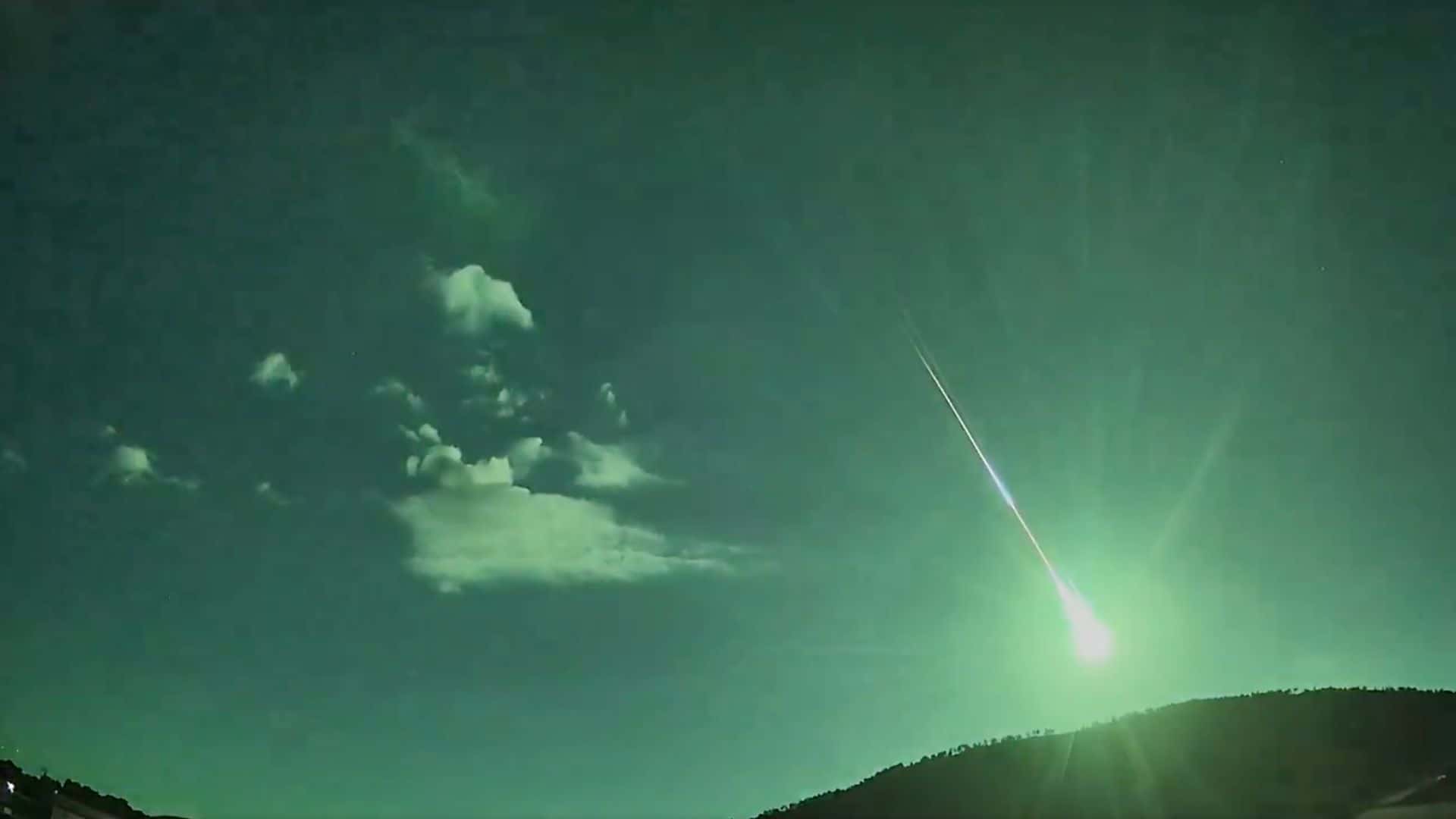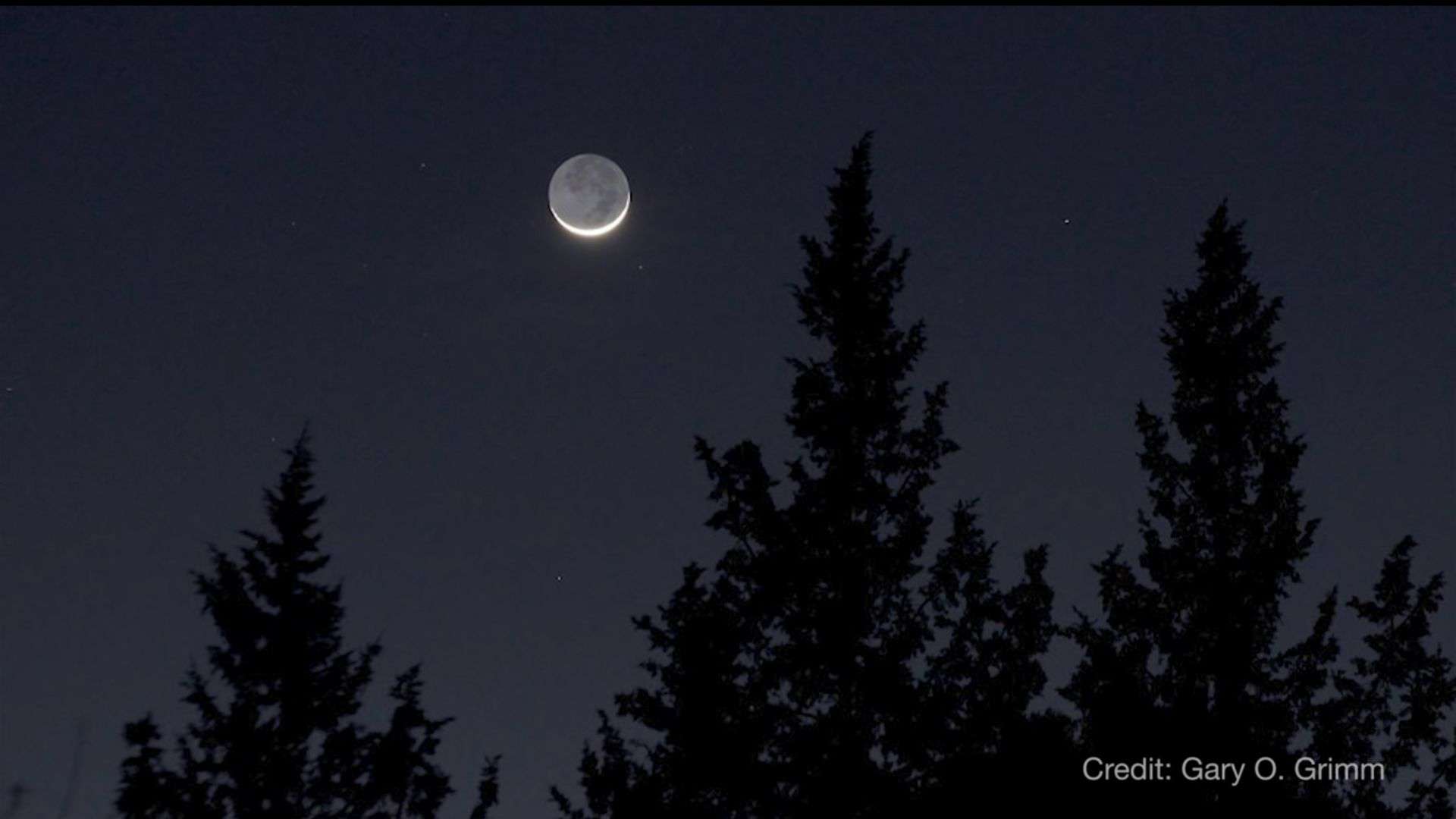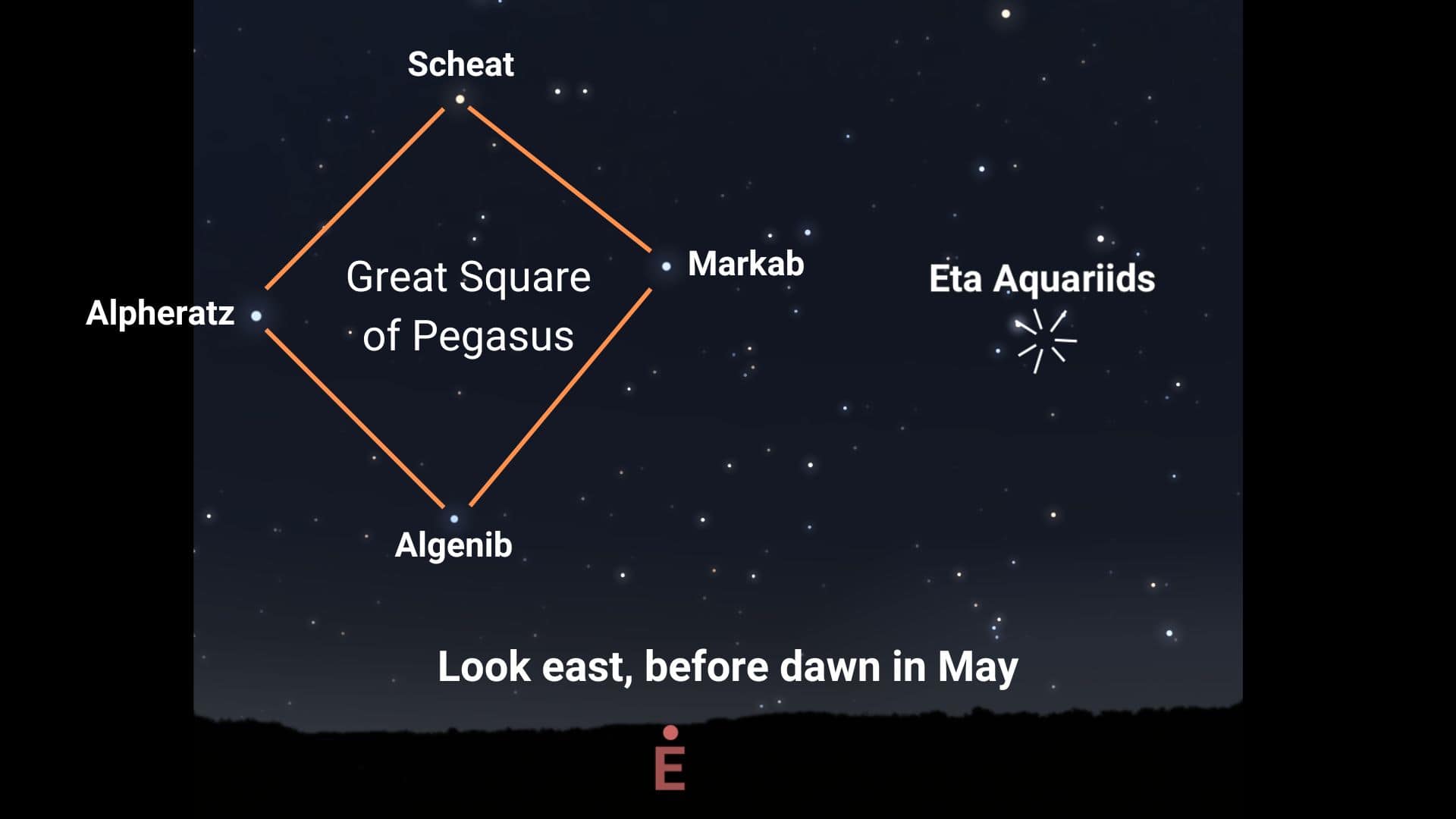Were you inside the path of totality during the total solar eclipse on April 8, 2024?
If your answer is yes, then did you notice our solar system’s other residents in the daytime during the total solar eclipse on April 8, 2024?
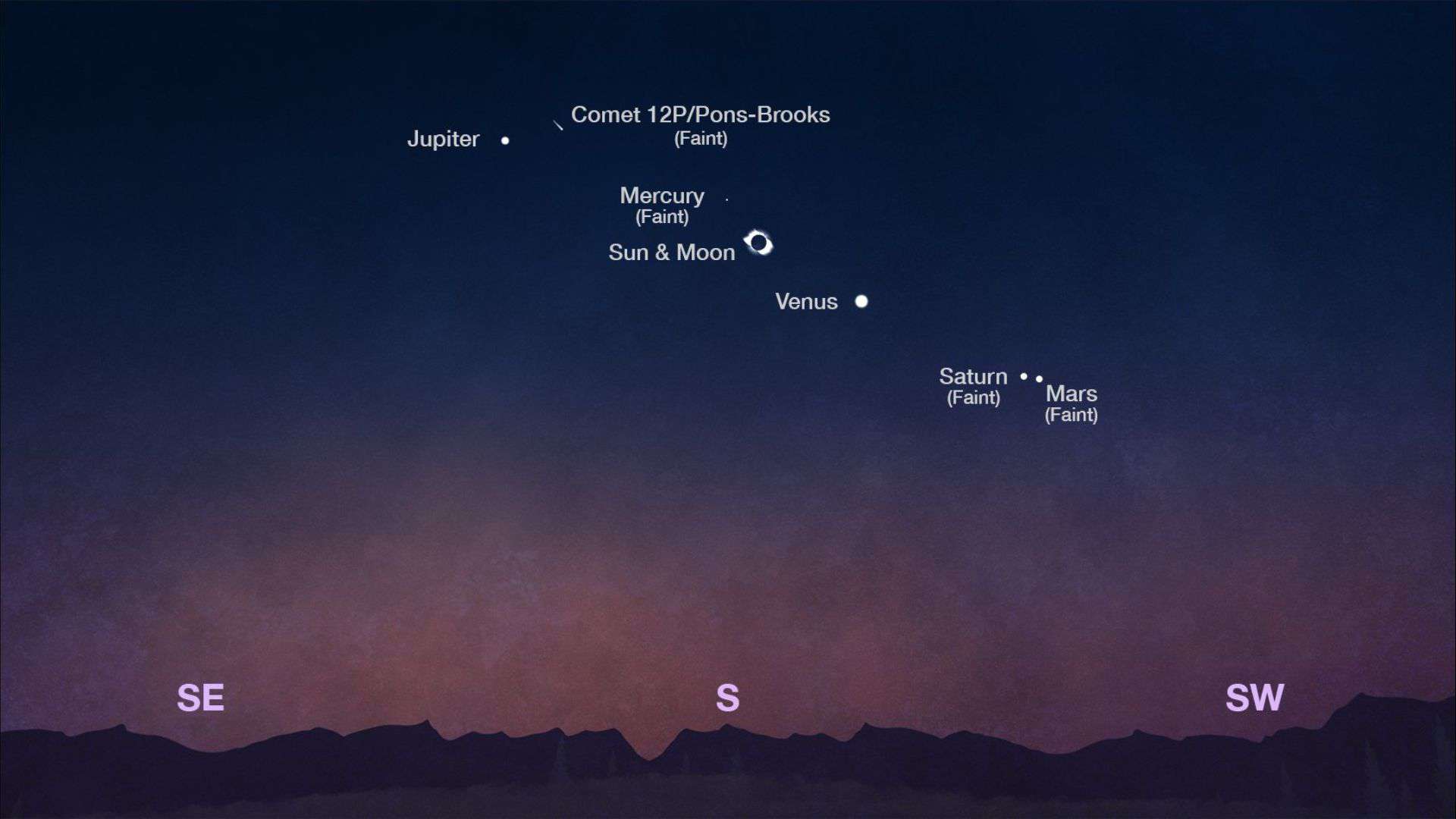
Currently, planets Mercury and Venus rise and set almost with the sun, as they are very close to the sun in our sky’s dome. So there is no chance to see them in the night sky now. Even Venus will not be visible in the night sky until July 2024.
However the total solar eclipse on April 8, 2024 gave you the chance to see bright planets which are very close to the sun now.
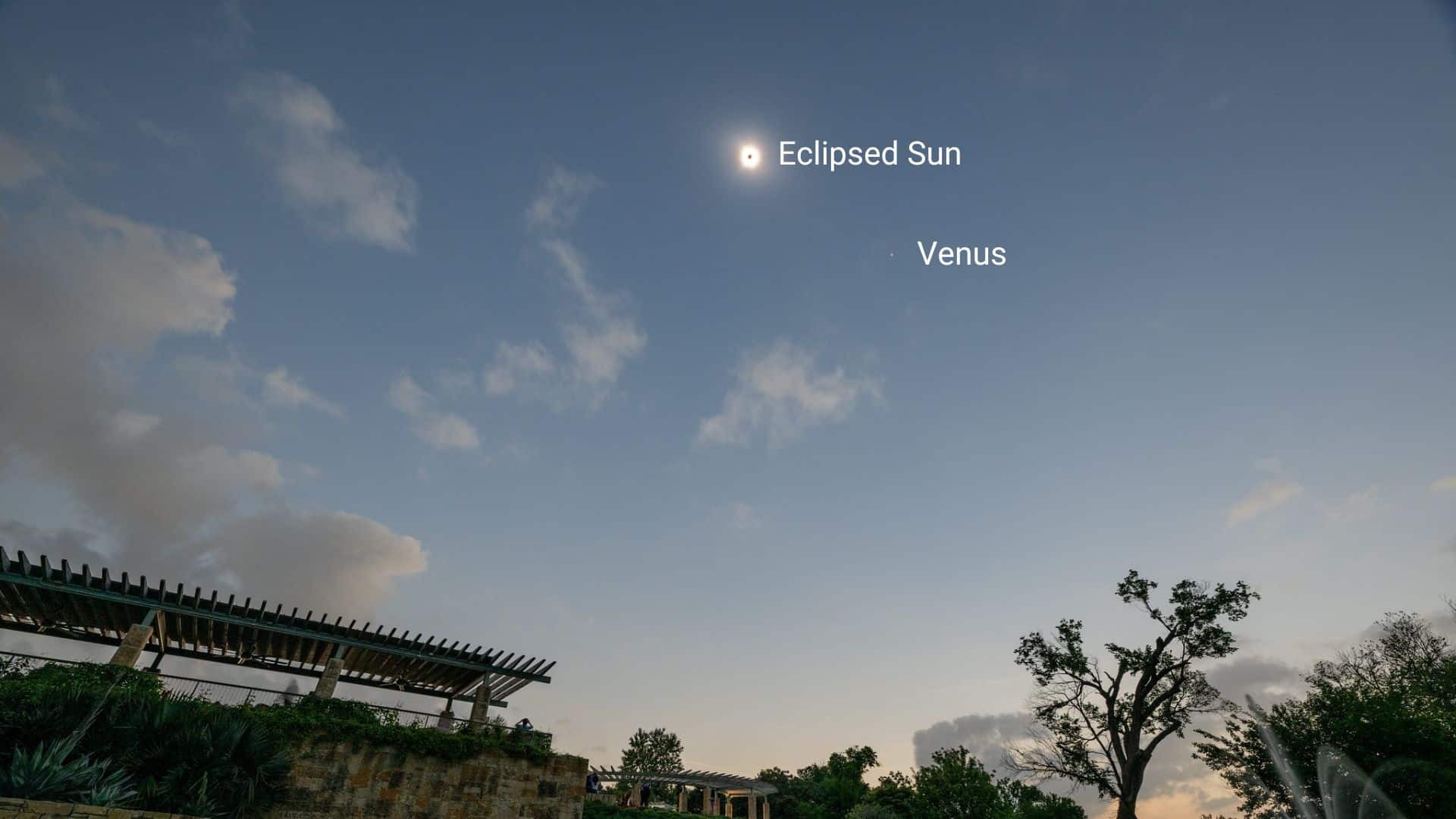
During the total solar eclipse of a few minutes on April 8, 2024, the brightness of the sun suddenly dropped as the moon completely blocked the sun’s disk and the day turned into night. So the bright planets, which are very close to the sun now, suddenly appeared in the daytime.
Though Mercury was hard to detect during the eclipse as it is too faint now, Venus was very easy to spot as it shines with a brightness of -3.8 magnitude now.
What about Jupiter? Currently Jupiter sets a couple of hours after sunset of your local time so it is visible only in the early evening in the night sky now.
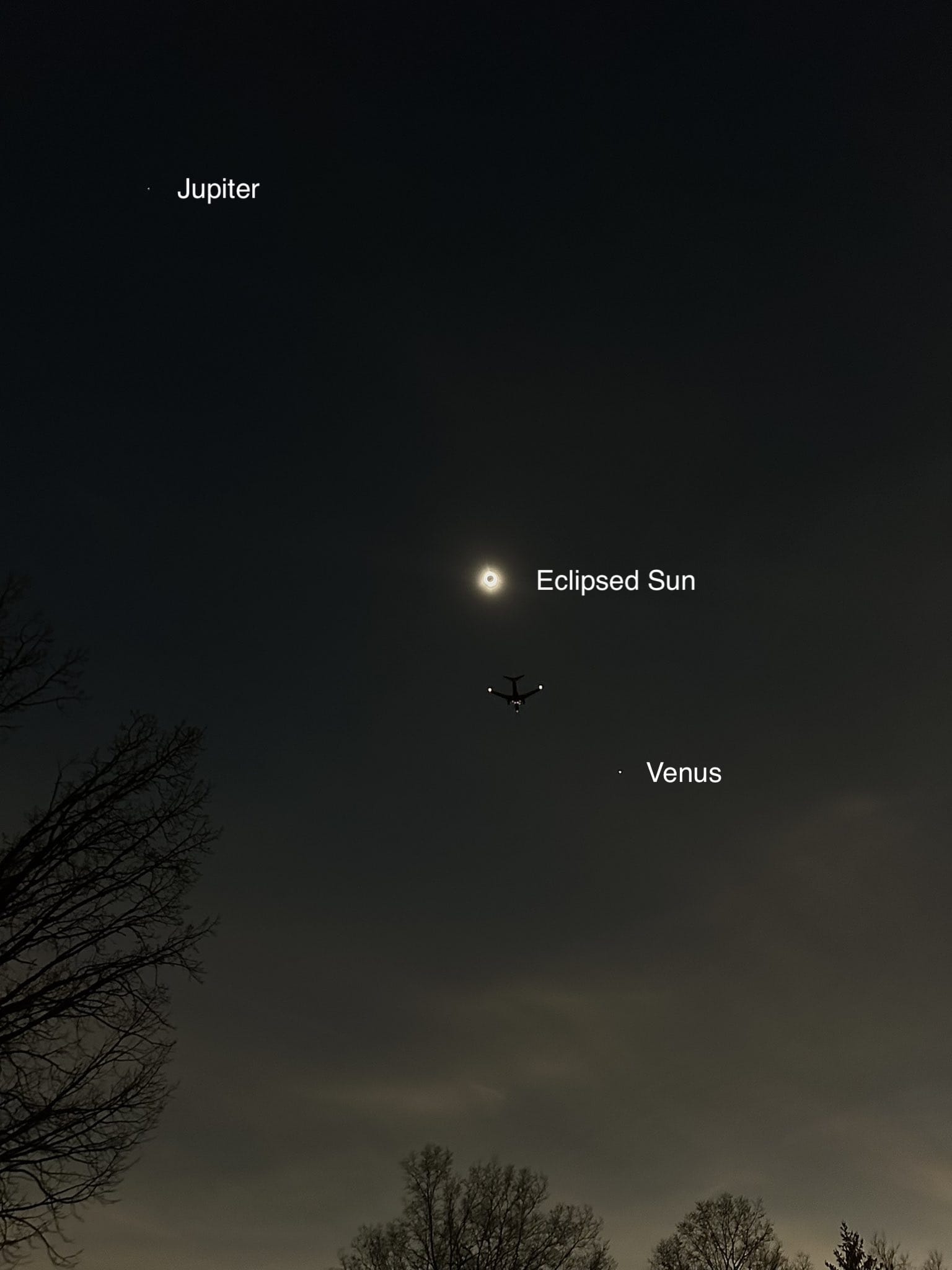
Although Jupiter is now a little farther from the Sun, the planet was visible in the daytime during the total solar eclipse on April 8, 2024, because it is bright enough to be visible to the naked eye now.
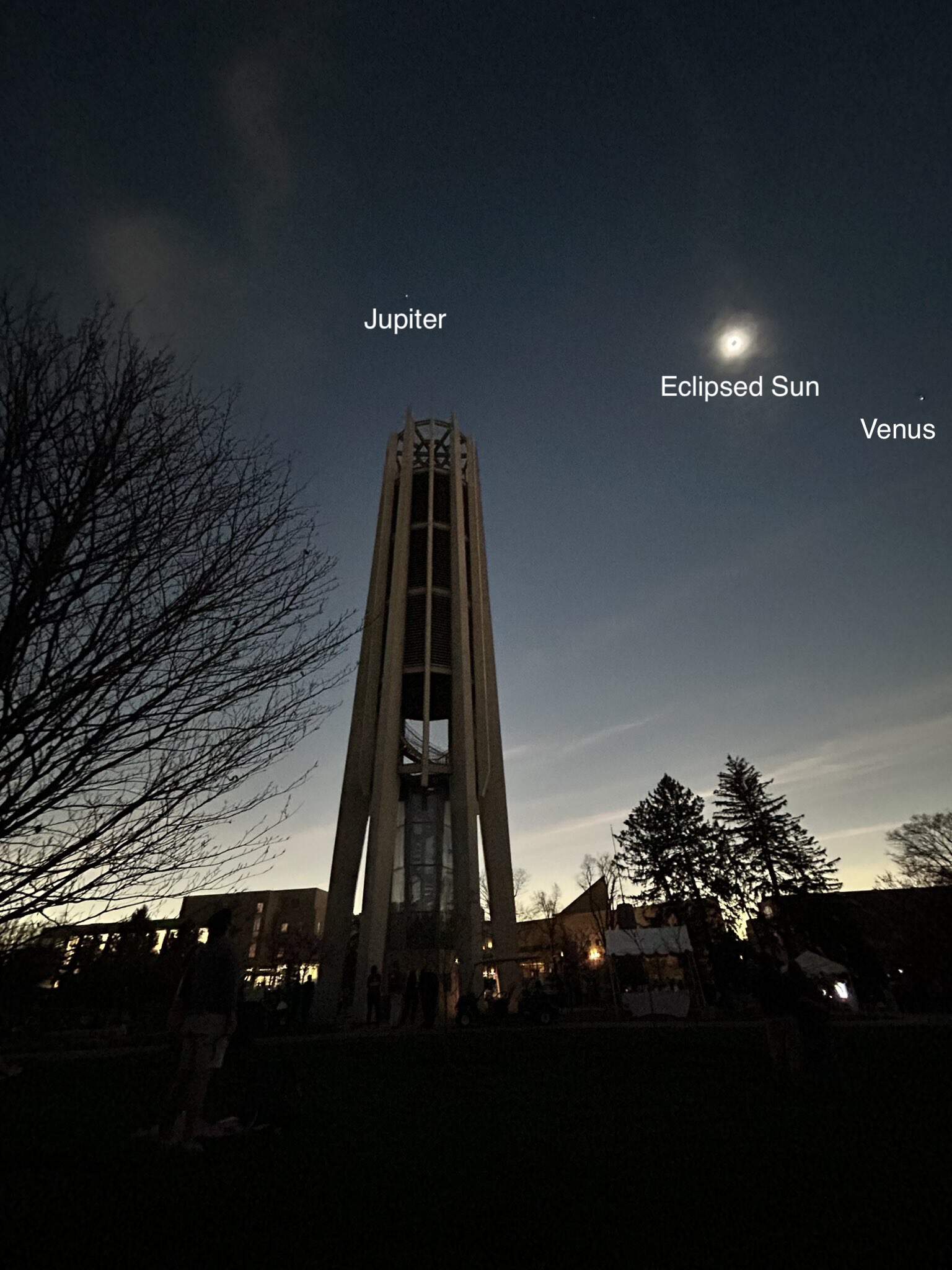
Not only that, but there was a chance to see the comet 12P/Pons-Brooks in the daytime during the total solar eclipse on April 8, 2024. Comet 12P/Pons-Brooks was very close and to the right of bright Jupiter during the total solar eclipse on April 8, 2024. However, you needed a telescope or binoculars to see the comet.
As we know, comets are always unpredictable, but still, did you try to catch the comet 12P/Pons-Brooks during the eclipse?
Related article: What planets are visible in the night sky in April 2024?
Please bookmark Spaceandtelescope.com or follow us on Facebook and Twitter to get latest space news, upcoming skywatching events and astronomy-related content.
